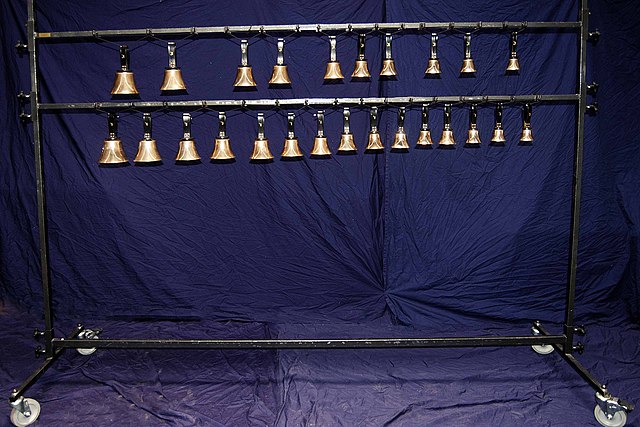Bell shrines are metal objects built to hold early medieval hand-bells, particularly those associated with early Irish saints. Although the enshrinement of bells lasted from the 9th to the 16th centuries, the more well-known examples date from the 11th century. Nineteen such Irish or British bell shrines survive, along with several fragments, although many more would have been produced. Of those extant, fifteen are Irish, three are Scottish and one is English. Most follow the general shape of a hand-bell capped with a crest above a semicircular cap that matches the shape of a bell handle.
Shrine of St. Patrick's Bell, 11th century, National Museum of Ireland
View of the St. Patrick's bell and shrine on display
Early Irish hand-bells on display in the NMI
Cap and crest of the Shrine of St. Patrick's Bell
A handbell is a bell designed to be rung by hand. To ring a handbell, a ringer grasps the bell by its slightly flexible handle – traditionally made of leather, but often now made of plastic – and moves the arm to make the hinged clapper strike the inside of the bell. An individual handbell can be used simply as a signal to catch people's attention or summon them together, but handbells are also often heard in tuned sets.
Handbell
Two English handbells, manufactured by Whitechapel Bell Foundry
Handbell choir practicing
Hand bells hung chromatically from stand








